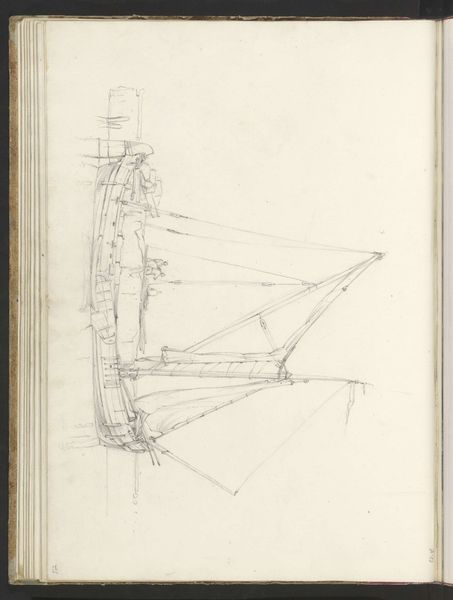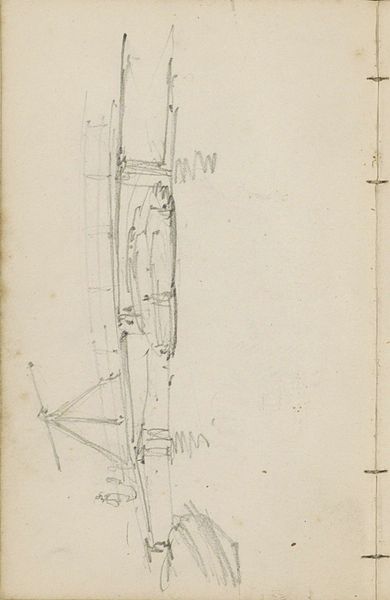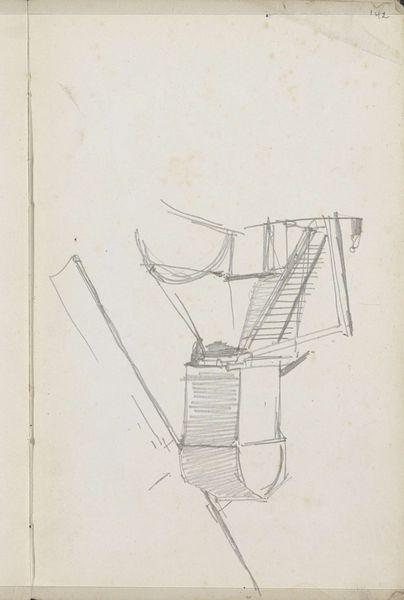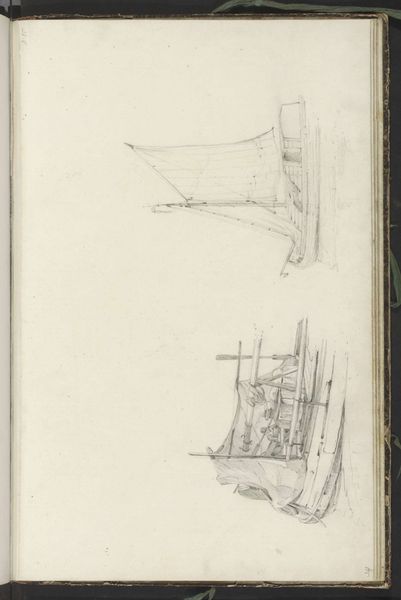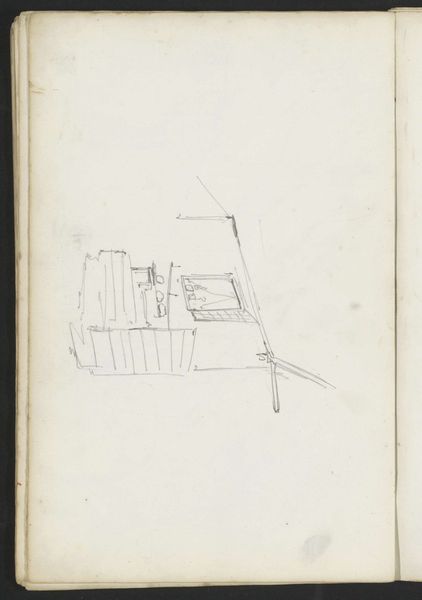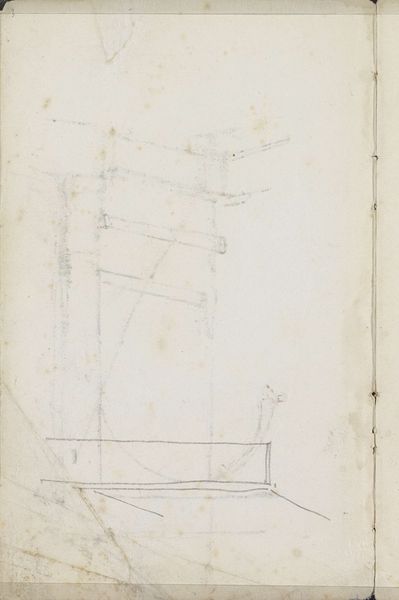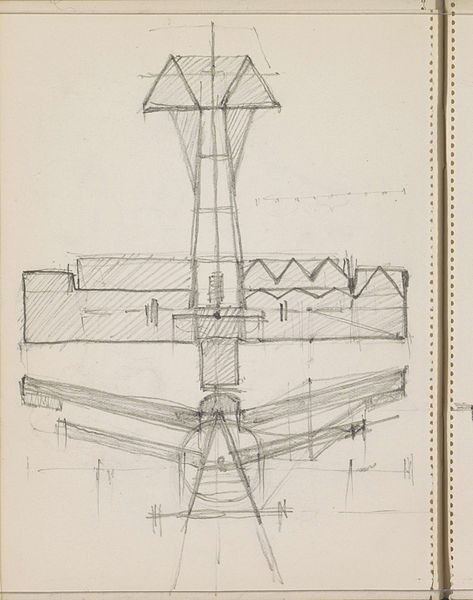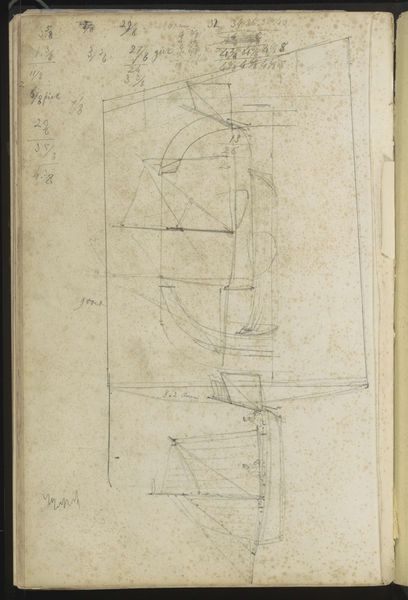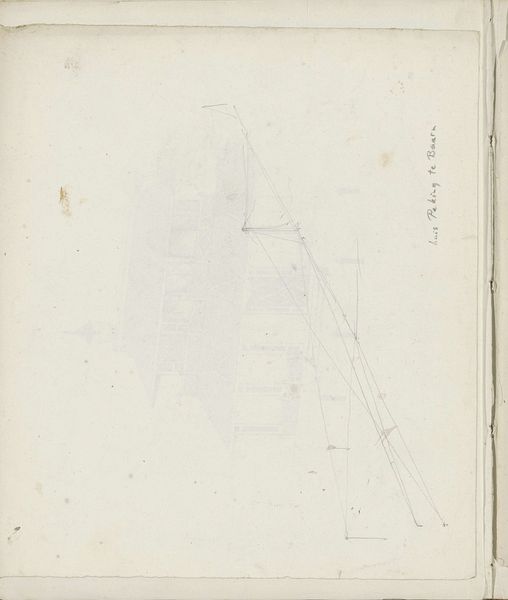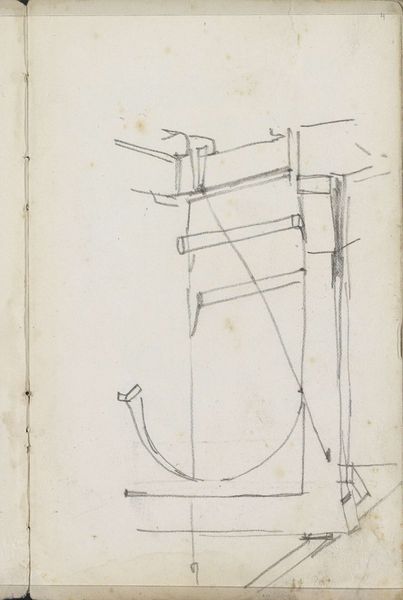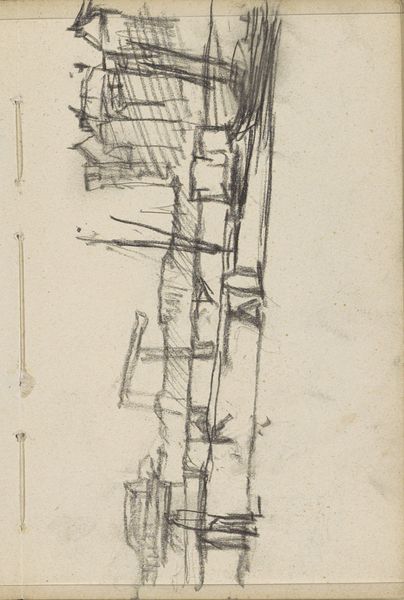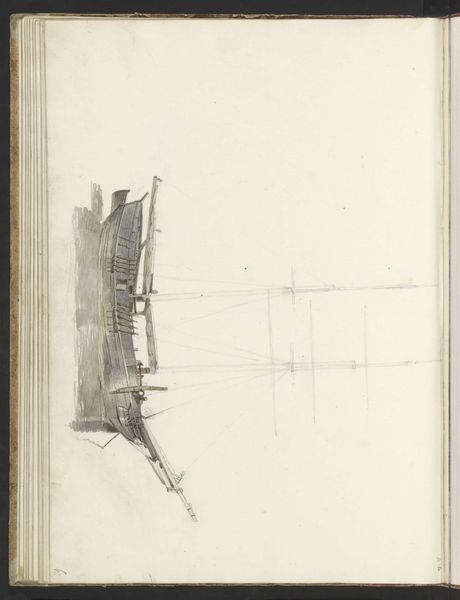
drawing, pencil
#
drawing
#
amateur sketch
#
aged paper
#
toned paper
#
sketch book
#
incomplete sketchy
#
hand drawn type
#
landscape
#
personal sketchbook
#
romanticism
#
pen-ink sketch
#
pencil
#
sketchbook drawing
#
sketchbook art
Copyright: Rijks Museum: Open Domain
Editor: Here we have "Zeilschip en een zeilboot op het water," or "Sailing Ship and a Sailboat on the Water," created sometime between 1797 and 1838 by Johannes Christiaan Schotel. It's a pencil drawing from a sketchbook. There’s something intimate and immediate about seeing an artist's working drawings like this. What stands out to you about it? Curator: The informality of this sketch invites us to consider the socio-economic conditions that supported artistic practice. Schotel was the son of a Haarlem dyer. The presence of sketchbooks like these speaks to the growth of a market for art amongst the rising middle class, whose wealth provided them with disposable income to purchase drawings like these. Does that give you any new perspective? Editor: Definitely. I was just thinking about the artistry, not really who was able to buy art and how that influenced what artists chose to depict. Curator: Right, and consider how maritime subjects became incredibly popular during this period of Dutch maritime power. Sketchbooks facilitated artists quickly capturing impressions for later, more finished works catering to a specific market keen on celebrating their national pride. Who was seeing the seas in art and why? Editor: It's like the sketchbooks themselves became a part of that narrative, showing how art was being made accessible, even in its earliest stages, to a wider audience celebrating the Dutch prowess at sea. Did he produce similar drawings in sketchbooks often? Curator: Indeed, and we see many quick studies of waves, ships, and harbours throughout this period. Art became intertwined with the construction of national identity, offering everyday people an engagement with the broader narrative of the nation’s maritime accomplishments. It shaped how they understood their world. Editor: So it’s less about a snapshot of ships, and more about art fueling how a nation sees itself? Curator: Precisely. An innocent looking sketchbook actually illustrates art’s public role in celebrating and shaping historical identity. Editor: That's a totally different way to view this unassuming little sketch. I hadn't thought about art having a political purpose for the common person. Thank you!
Comments
No comments
Be the first to comment and join the conversation on the ultimate creative platform.
